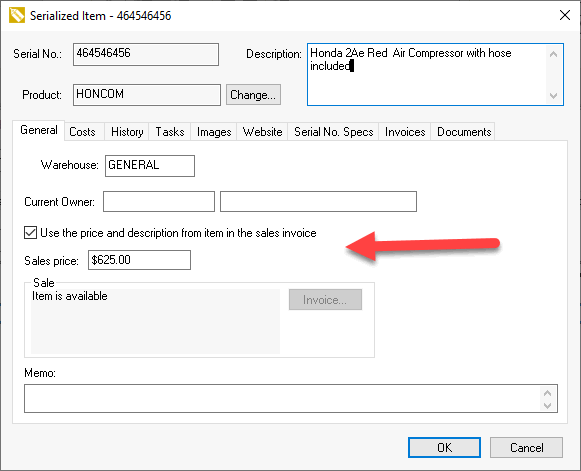Pricing Serialized Items
EBMS gives the user flexibility in pricing serialized items.
The price can be based on the inventory item, similar to standard products. This method requires all the individual serialized items to have the same price, based on the root Product ID code that connects the serialized items.
Another method allows the user to customize a specific unit and change the price for the specific unit. Trade-in items, used equipment, customized equipment, and other specialized units can be managed and priced using this feature.
-
Inventory items can be priced based on the last cost. The last cost is based on the most recent cost of the serial number and does not include added costs.
-
Item pricing can be calculated from the list price or base price.
-
Item pricing can be set manually.
Review the Pricing section for details on standard pricing options.
A price can be associated to individual serial numbers. This price can override the pricing formula set up within the inventory item.
Complete the following steps required to price based on individual serial numbers:
Open the serialized item by clicking on Inventory > Serialized Items or by selecting an item from the Serial Numbers tab of the inventory item.
Click on the serialized item's General tab as shown below:
Enable the Use the price and description from item in the sales invoice option to override the inventory item pricing with the Sales Price recorded on the serialized item. The Sales > Options > Invoices and S.O.s tab combine line options will be ignored when this option is enabled.
Open or create a sales invoice and add a serialized item to the invoice list. Enter a Product with a Classification of Serialized Item and the following window will appear:
To select the correct Serial Number items that will be sold on the invoice, highlight a serial number from the Available Numbers side and click the Select >> button to move it to the Selected Numbers side. Repeat this process until the Selected Numbers column contains the correct serial numbers for the sales order.